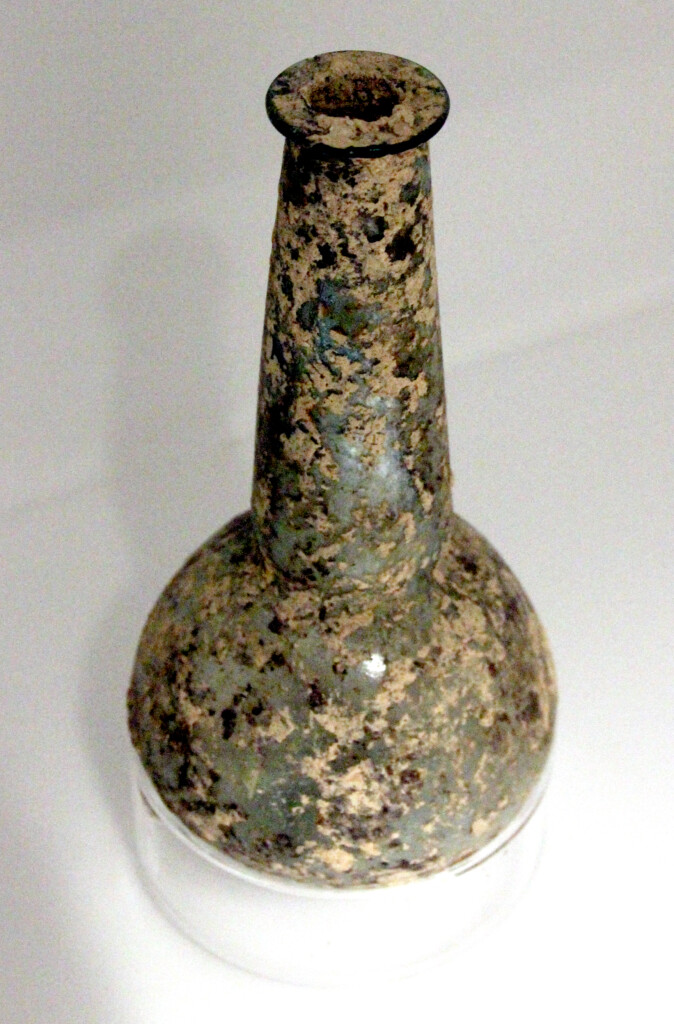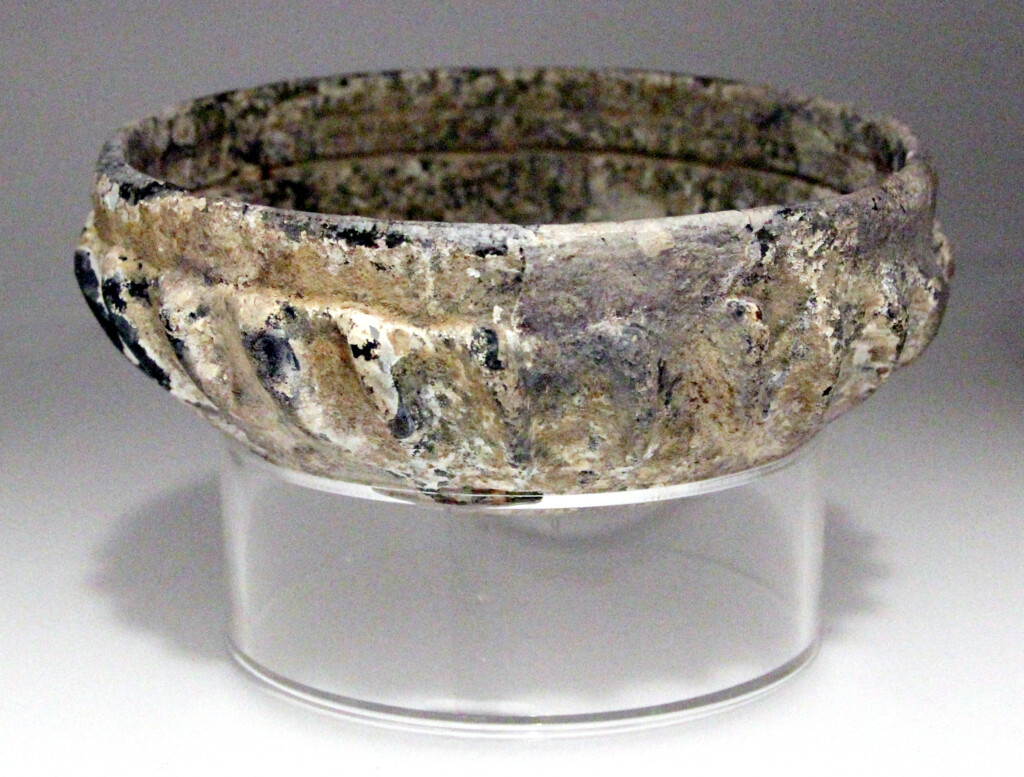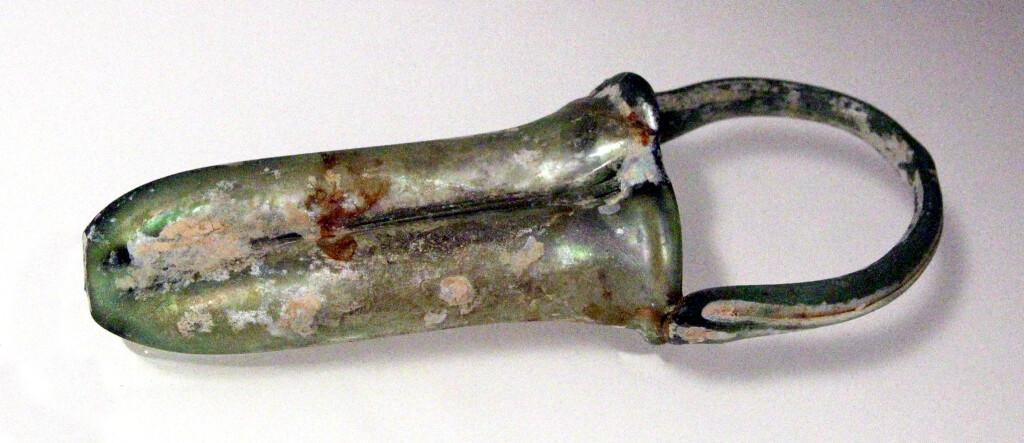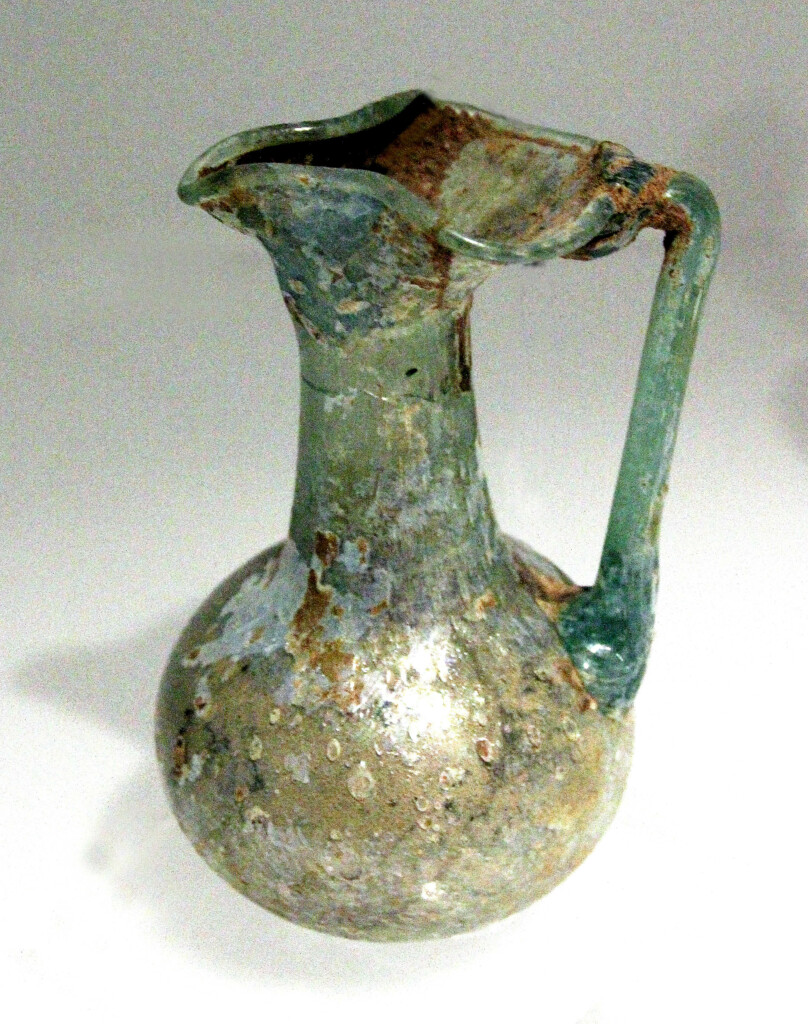TIOH Art Tour: Ancient Roman Glass Artifacts
- Holy Land – Israel
- Glass artifacts
- Roman Glass tear collection bottle, c. 100-400 CE
- Roman Glass ovoid vase, c. 100-300 CE
- Roman Glass vase, c. 100-300 CE
- Roman Glass vase, c. 100-300 CE
- Roman Glass ribbed bowl, c. 100-300 CE
- Roman Glass portable wine juglet, c. 100-300 CE
- Roman Glass trefoil lip juglet, c. 300-400 CE
- Gifts of the Briskin Family
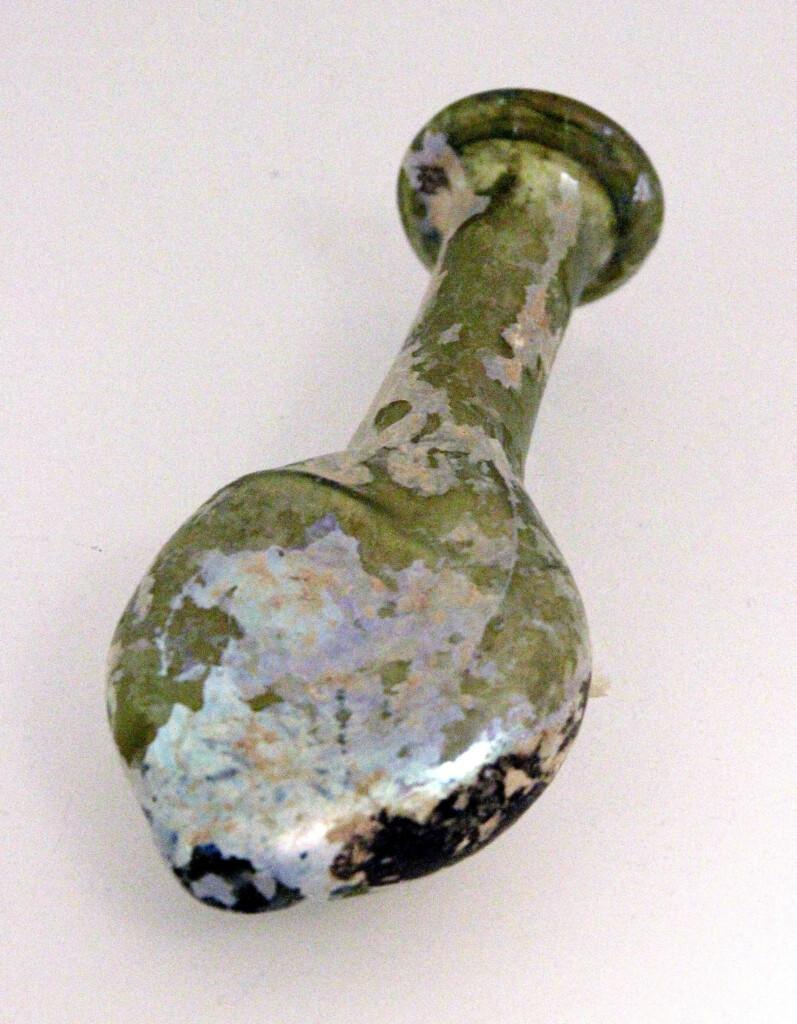

Archeologists continue to discover Roman Glass in Jerusalem and many parts of the expansive Roman Empire of 2000 years ago. Roman Glass is made up mostly of beach sand and was common and affordable to the masses. Some types of glass were valued more than others, particularly raw glass that had been stylized with designs, patterns, and images. It was thought that all food and drink served in glass tasted clean with no residual aftertaste. While the lower classes ate and drank from simple glass, the wealthiest ate and drank out of gold and silver dishes, yet still preferred their food served from glass serving bowls and their drink served from glass carafes. Physicians swore by glass bottles for their medicines and tinctures. Glass was used to store and display everything from cosmetics and perfumes to salves and oils. Glassmaking was a hazardous labor job, left to the slaves and the lower classes. Many Hebrews and Phoenicians were glass workers.
In front of you are bowls, vases, and a portable wine jug. One captivating piece is the tier collection bottle or tier catcher (a). Shaped like a teardrop, the typical tier catcher bottle was both minimal and functional and collected tiers to reveal the intensity of feeling for a person who had gone to battle or who had died. During the reign of the Roman Empire in the event of a death, the bereaved would catch their own tears and then deposit their tier catchers in the tomb of the deceased. The more tears collected, the more important the deceased. This particular bottle caught tears of grief for the loss of the Second Temple, which was destroyed by the Romans at the siege of Jerusalem in 70 CE.
Notice the iridescent quality on this tear catcher – the iridescence on Roman glass is not unusual to find and is the happy accident of the corrosion of the glass’ surface, having been buried in soil over time. The light reflecting off the corroded glass layers creates wild colors.

